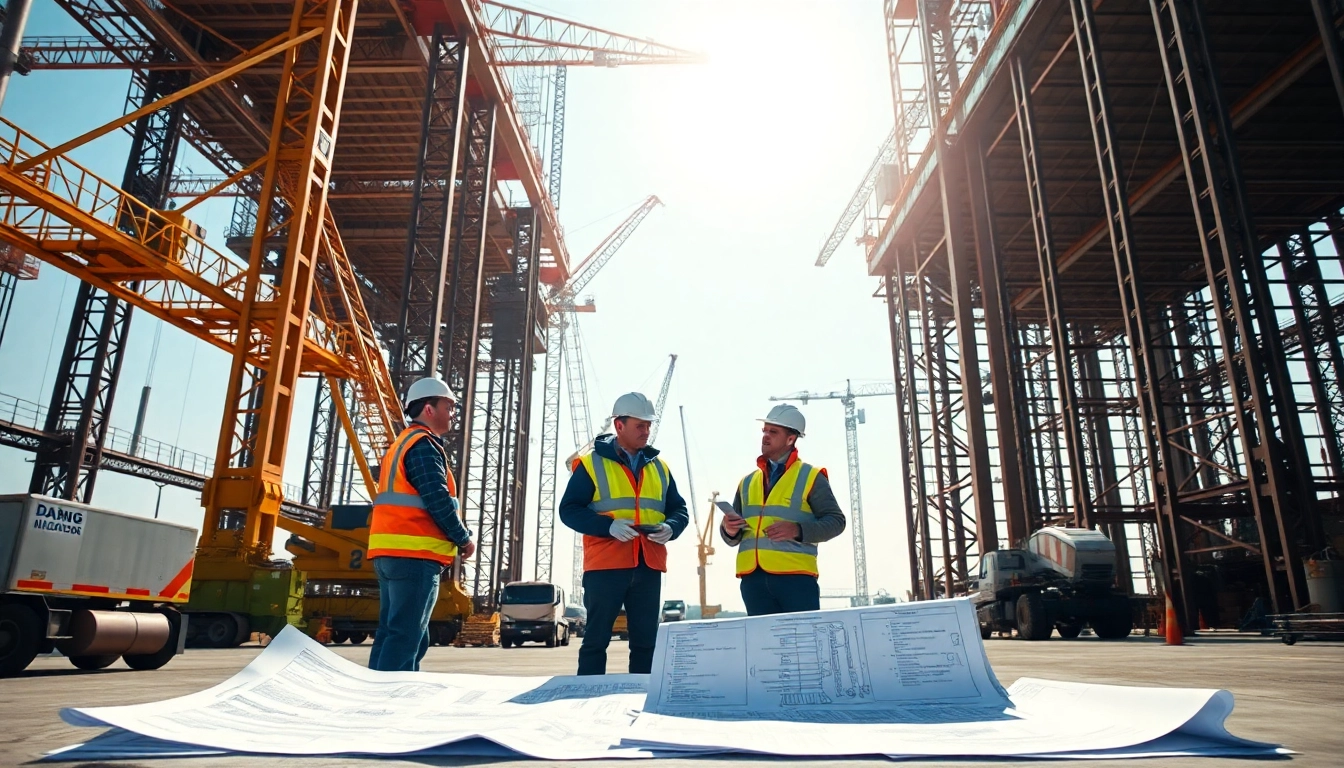
Understanding the Level 5 NVQ Diploma in Controlling Lifting Operations
What is the NVQ Level 5 Diploma?
The NVQ Level 5 Diploma in Controlling Lifting Operations is a qualification designed for individuals who wish to demonstrate their skills and knowledge in managing lifting operations primarily within the construction industry. This qualification is part of the Regulated Qualifications Framework (RQF) and is geared toward professionals who already have practical experience but need formal recognition of their competencies in lifting operations. More specifically, this diploma focuses on planning, executing, and supervising lifting operations safely and efficiently, making it critical for those aspiring to advance their careers in construction management or machinery operation.
Importance of Controlling Lifting Operations
Controlling lifting operations is vital to ensuring safety and efficiency on construction sites. With numerous projects requiring heavy materials to be moved, it’s essential that operations are managed by trained professionals. Effective lifting operation management prevents accidents, injuries, and damage to equipment, which can lead to significant financial losses and reputational damage to organizations. It also ensures compliance with health and safety regulations legislated by local authorities and national institutions.
Core Competencies Addressed
The NVQ Level 5 Diploma encompasses several key competencies that professionals must master. These include:
- Planning Lifting Operations: Candidates learn to assess risks, evaluate lifting equipment, and create operational plans that ensure safety and efficiency.
- Supervising Lifting Activities: This includes directing lifting operations on-site and ensuring that all personnel involved are following the proper safety protocols.
- Communicating Effectively: Encouraging open communication among team members, which is critical for the safety and success of lifting operations.
- Adhering to Legislation: Understanding the legal frameworks governing lifting operations is critical for compliance and safety on construction sites.
Preparing for Your Level 5 NVQ
Essential Study Materials
Preparing for the Level 5 NVQ involves gathering the right study materials. Essential resources include the official NVQ guidelines, textbooks specific to lifting and transportation operations, and access to online platforms that provide sample questions and practical scenarios. Candidates may consider using practical tools such as the level 5 nvq diploma in controlling lifting operations answers, which consists of practical tips and previous assessments.
Tips for Answering Exam Questions
To excel in assessments, candidates should adopt effective strategies. Firstly, understanding the questions fully before responding is crucial. Look for keywords in the questions to ensure an answer is focused. Providing real-world examples helps to illustrate your understanding and practical experience. Lastly, managing time efficiently during the exam is vital to ensuring all questions are attempted without rushing.
Common Pitfalls and How to Avoid Them
Several common challenges can hinder candidates preparing for their NVQ assessments. One pitfall is inadequate preparation or lacking comprehensive study materials. To counter this, dedicate sufficient time to study and leverage various resources. Another issue is miscommunication during team operations. Regular practice of team communication and role-playing can enhance understanding and cooperation among peers. Lastly, neglecting to clarify the safety regulations can lead to failures in assessments; accordingly, candidates should familiarize themselves with all relevant legislation and best practices prior to any operational assessments.
Practical Applications in the Workplace
Case Studies of Successful Operations
Real-life case studies of successfully planned and executed lifting operations illustrate the importance of a structured approach. For instance, a construction company may profile a project where a multi-ton steel beam was safely lifted and installed using a crane. The operation involved detailed planning, including risk assessments, proper equipment selection, and clear communication among the operators, which resulted in zero injuries and on-time project completion.
Implementing Safety Protocols
In regulating lifting operations, safety protocols must be prioritized. These include conducting pre-lift inspections, establishing a clear signal system, and making safety checks on equipment before each use. Furthermore, having a competent person responsible for overseeing the lifting operations can significantly reduce the likelihood of accidents. Organizations should also consider holding regular safety training updates to reinforce the importance of these protocols among team members.
Role of Communication in Lifting Operations
Effective communication is fundamental in any lifting operation. It ensures that everyone on site is aware of their roles and the specific procedures to be followed. Implementing a communication plan that outlines clear channels of communication can help eliminate misunderstandings that lead to accidents. For complex lifting operations, having designated signalers can help maintain a direct visual line and minimize distractions, thereby enhancing operational success.
Assessment and Evaluation Criteria
What Assessors Look For
Assessors will evaluate candidates based on their understanding and ability to apply the principles of lifting operations. Key assessments may involve practical demonstrations, where candidates must showcase their ability to plan and execute safe lifting within regulatory guidelines. Moreover, assessors will be looking for an understanding of risk management and adherence to proper procedures during lifting operations.
Preparing for Performance Reviews
Candidates must be proactive in preparing for performance reviews. This includes gathering evidence of past lifting operations, including documented risk assessments, equipment checks, and feedback from peers. Having a well-maintained portfolio of evidence showing continuous professional development can further demonstrate competency to assessors during evaluations.
Understanding Feedback and Improvement Areas
Feedback from assessors is vital for personal and professional growth. Candidates should actively seek constructive criticism, focusing particularly on areas identified as needing improvement. Responding to feedback by taking additional training sessions or seeking mentorship can bolster skills in weaker areas, ultimately enhancing one’s competency in lifting operations.
Resources for Further Learning
Online Courses and Workshops
Numerous online courses and workshops are available for individuals pursuing further education in lifting operations and safety management. Websites such as Coursera or LinkedIn Learning offer industry-specific programs where candidates can learn at their own pace. Additionally, many institutions provide short workshops aimed at enhancing specific skills, such as risk management or communication in lifting operations.
Books and Publications Related to Lifting Operations
To deepen understanding, candidates may turn to comprehensive textbooks and publications focused on lifting operations management. Books authored by industry experts that cover regulations, techniques, and case studies can serve as valuable resources for both exam preparation and practical application of the learned content.
Joining Professional Organizations
Becoming a member of professional organizations related to construction and lifting operations can provide additional resources and networking opportunities. Organizations such as the Chartered Institute of Building or the Construction Industry Training Board (CITB) offer support, training resources, and updates on regulatory changes that can affect lifting operations.







